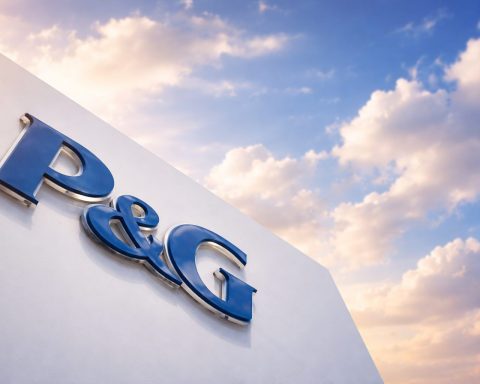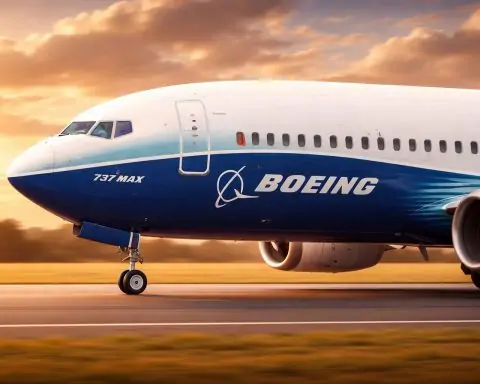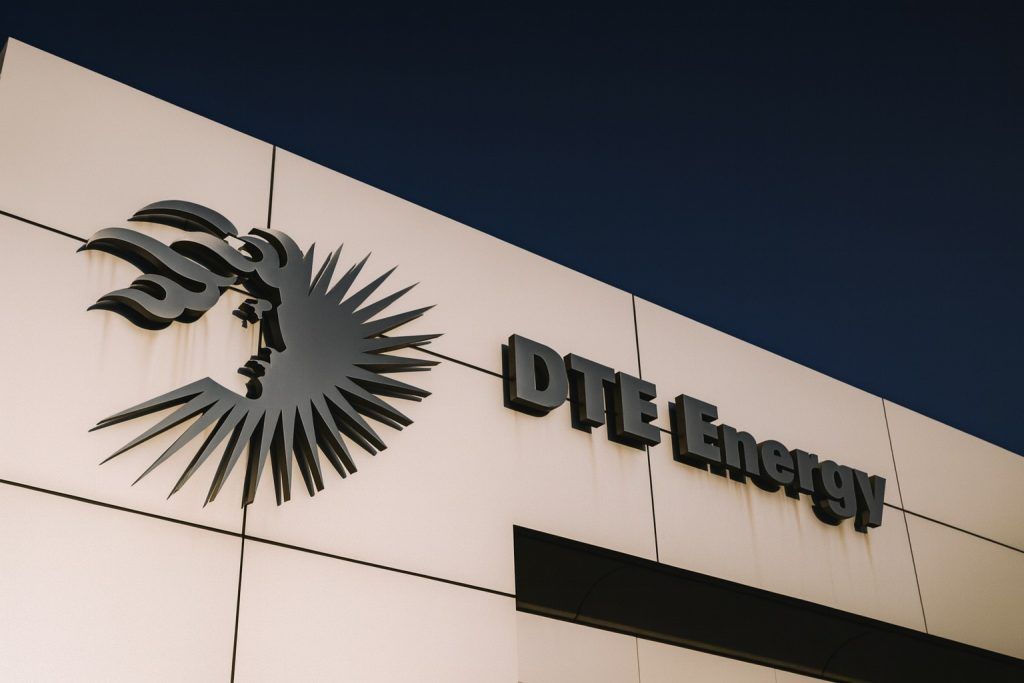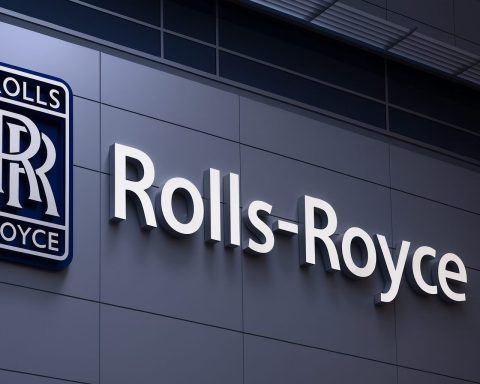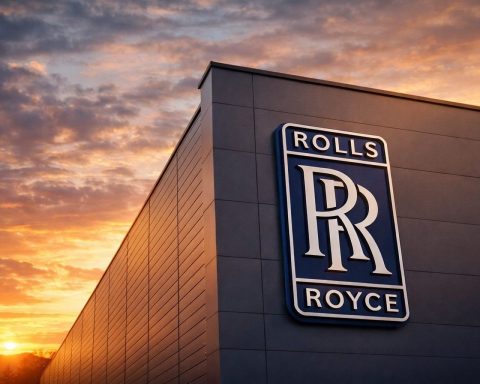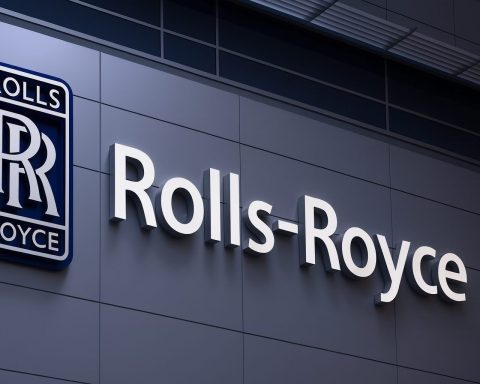- Stock at Peak Levels: As of 29 Sep 2025, Rolls-Royce (LSE:RR) shares are trading around 1,190p, up about 0.3% on the day [1] and roughly 100% higher year-to-date [2]. The stock has more than doubled in 2025, reaching all‑time highs amid strong earnings and industry tailwinds.
- Blowout H1 Results: In late July 2025 Rolls-Royce reported H1 underlying operating profit of £1.7 billion (up 50% year-on-year) and revenue up 11%, driven by a civil-aerospace recovery and defense work [3] [4]. Management raised full-year profit guidance to £3.1–3.2 billion and free cash flow to £3.0–£3.1 billion [5] [6]. An interim dividend of 4.5p and a £1 billion share buyback (400m executed by H1) were announced, boosting investor confidence [7] [8].
- Major Contracts & Tech Deals: Rolls clinched several key contracts: in May 2025 it won a five-year £500m UK Ministry of Defence support deal for the EJ200 Typhoon jet engine [9]. In June-July 2025 the UK government selected Rolls-Royce to build the country’s first SMR (small modular reactor) nuclear plants, backed by £2.5 billion of public funding [10]. Shortly after, Czech utility ČEZ signed an “early works” agreement with Rolls-Royce SMR to develop SMRs at Temelín [11]. These nuclear-energy wins – plus heavy defence programs (e.g. submarine reactors) – are seen as long-term growth drivers [12] [13].
- Analyst Outlook: Wall Street and City analysts are broadly bullish. Citi recently raised its 12‑month target to 1,101p (up from 641p) [14], while Deutsche Bank and JPMorgan lifted theirs to about 1,220p and 1,245p [15]. Goldman Sachs projects a target around 1,250p [16]. MarketBeat reports a consensus “Moderate Buy” rating with an average target of ~1,189p [17]. Many analysts note that current price targets imply only modest upside from here, given the rally so far, but foresee further gains if growth continues.
- Industry Context: Rolls-Royce benefits from recovering commercial aviation and surging defence budgets. Global air travel is trending back to pre‑pandemic levels (fueling engine flying hours), while NATO/EU defence spending hit record highs in 2024 [18] [19]. The UK and other governments are prioritizing clean energy (nuclear SMRs) and greener aviation (SAF engines). Rolls’s R&D is heavily focused on next-gen tech – e.g. its “UltraFan 30” narrowbody engine demonstrator has won €378 million of EU funding to prove a 20% fuel‑burn reduction by 2035 [20] – aligning with climate and security trends.
Recent Stock Performance
Rolls-Royce stock has surged strongly in 2025. By late September the share price stood around 1,180–1,190p (12 Sep 2025: ~1,150p) [21] [22], roughly double its level at the start of the year [23]. The year-to-date rally (~100%) has lifted Rolls into the FTSE 100’s top ranks by market cap. In the past month the stock added another few percent as H1 results drove investor demand. For example, on 29 Sep the price hovered near 1,187p (up about 0.3% from prior close) [24]. Prior to that, trading was strong: after the earnings release on 31 Jul, the stock jumped +10% in a single day [25].
Even after this run-up, analysts note the trend remains supportive: MarketBeat shows a “Moderate Buy” consensus (3 Buys, 2 Holds) with an average 12‑month target 1,189p [26]. Technical analysts point to positive momentum (price above 50‑ and 100‑day moving averages [27]). In short, Rolls-Royce’s share price is near record highs, reflecting outsized gains since early 2023 and broad investor enthusiasm [28] [29].
Major News & Corporate Developments
Record Half-Year Earnings (July 2025). Rolls’s half-year financial report (31 July) was a catalyst. Revenue rose 11% to £9.1bn and underlying operating profit climbed 50% to £1.7bn [30] [31]. Management cited stronger engine flying hours, improved profitability in the civil aerospace aftermarket, and growing defence contracts. CEO Tufan Erginbilgic stated: “Our multi-year transformation continues to deliver. […] We achieved significant time-on-wing milestones and improved aftermarket profitability” [32]. He noted progress in Power Systems (growth in data‑center and government power contracts) and highlighted the SMR win: “Rolls-Royce SMR was selected as the sole provider of the UK’s first SMR programme. We expect Rolls-Royce SMR to be profitable and free cash flow positive by 2030.” [33]. The company raised full-year guidance on profit (now £3.1–3.2bn) and free cash flow (£3.0–3.1bn) [34]. This “beat and raise” surprised many – analysts at Shore Capital called the results “excellent” [35] – and sent the stock soaring (an ~+10% intraday jump to new highs) [36].
Defense & Service Contracts. Rolls continues to land big deals. In May 2025 it won a new UK Ministry of Defence contract to maintain 130 EJ200 Typhoon jet engines over five years [37]. Defence Secretary Grant Shapps said the deal (worth hundreds of millions) helps sustain 200 high-skilled jobs at Rolls and thousands in its supply chain [38]. In the U.S., Rolls-Royce Corp (the U.S. subsidiary) also won major contracts – e.g. a $167m award for LCAC hovercraft engines [39] – reflecting robust demand in naval aviation. These defense wins underscore Rolls’s strong position in military propulsion.
Nuclear and SMRs. A highlight in mid-2025 was Rolls-Royce’s success in the nuclear SMR (small modular reactor) market. On 10 June the UK government announced Rolls-Royce SMR as the preferred builder of Britain’s first SMRs, with £2.5 billion of state funding pledged [40]. Britain plans three new mini-reactors in the 2030s (enough to power ~3 million homes) with Rolls-Royce as lead technology partner [41]. Shortly after, Czech utility ČEZ signed an “early works” deal with Rolls-Royce SMR for SMRs at the Temelín plant [42]. Under that deal, ČEZ also took a 20% stake in Rolls SMR and aims to deploy up to 3GW of SMRs by the mid-2030s [43]. Together these deals signal a rapid expansion of Rolls’s nuclear pipeline; CEO Cholerton hailed the Czech pact as a “unique opportunity” to bring clean power to Central Europe [44]. (Separately, U.S. and European interest in SMRs is growing, but Rolls has the early-mover advantage in UK government support.)
Other Tech Developments. Beyond contracts, Rolls is investing in future engines. Notably, in Sept 2025 Rolls announced EU funding (€378m) for a new “UltraFan 30” narrowbody jet engine demonstrator [45]. This project (part of EU Clean Aviation) will ground-test a 30,000 lb-thrust UltraFan core by late 2020s, aiming for a 20% fuel burn improvement over current engines [46]. Such R&D underpins Rolls’s long-term competitiveness in civil aviation. Meanwhile, Rolls continues to upgrade existing fleets (e.g. new “Durability Enhancement” kits for Trent 1000 engines in June) to boost time-on-wing and cut maintenance – actions that improve margins and are cited by analysts as important catalysts.
Corporate moves: On the financial side, Rolls is enhancing shareholder returns. The Board set a 4.5p interim dividend (first since the pandemic) and has nearly completed a £1bn buyback plan [47]. It also reduced debt and cut pension liabilities (capping the UK pension scheme with £4.3bn cash in 2023). CEO Erginbilgic has repeatedly emphasized capital discipline and cash flow; analysts note the company is on track for record cash generation. No new senior leadership changes were announced in 2025 – Erginbilgic (CEO) and CFO Helen McCabe remain in place – signaling continuity of the turnaround strategy.
Analysts’ Forecasts and Market Sentiment
Wall Street and City analysts largely applaud Rolls’s turnaround. As noted, Citi recently upgraded its price target from 641p to 1,101p (while maintaining a Neutral view) [48]. Deutsche Bank raised its target to 1,220p and JPMorgan to 1,245p [49], reflecting confidence after the H1 beat. Goldman Sachs has been especially bullish: in September it set a 1,250p target, implying near-term upside ~9% [50]. Goldman’s analysts justified this by forecasting Rolls making £4.9bn free cash flow by 2028 (well above management’s £4.2–4.5bn plan) [51]. They cite continued improvements in engine durability (“time on wing”), better pricing on service contracts, and robust power systems demand as reasons for upside [52].
However, some observers warn the recent surge may have priced in much good news. For instance, Shore Capital commented that the upgraded guidance looks conservative given momentum [53], but other strategists caution macro headwinds (like potential airline slowdowns or higher interest rates) could moderate growth. Overall, consensus remains moderately bullish: MarketBeat’s consensus rating is “Moderate Buy” [54] and the average analyst target (~1,189p) is roughly flat versus current levels. In short, many analysts see further upside – possibly to 1200–1250p – but the margin for surprise may be shrinking after this year’s rally.
Expert Commentary and Outlook
Industry observers note that Rolls-Royce’s comeback is remarkable. An analysis by Interactive Investor observed the stock “has extended its remarkable share price rise from a lowly 100p in early 2023 to as high as 1,108p”, making Rolls one of the FTSE’s largest companies [55]. Analysts like Morgan Stanley and Shore Capital praised the H1 results as “excellent” [56] [57]. Morgan Stanley’s team pointed out that even after upgrades, Rolls’s multi-year targets look “derisked” – all divisions are already hitting the margins expected for 2028 – and concluded “the reasons to own Rolls remain very much intact”, suggesting the stock could “meaningfully outperform” [58]. Shore noted that the long-awaited improvement in engine maintenance (“time on wing”) has finally arrived and is driving much of the profit lift.
The company’s own executives are upbeat. CEO Erginbilgic told investors the “multi-year transformation continues to deliver” and highlighted that strategic fixes (like the Trent 1000 engine upgrade) have doubled maintenance intervals [59]. He reiterated commitments to cleaner technology and said investors should view the SMR business as a future profit generator [60].
Independent commentators also emphasize the broader strategic case. A recent report by AInvest noted Rolls’s defense credentials – including a £9 billion “Unity” contract to build submarine reactors [61] and its role powering the next-generation GCAP fighter jets [62] – align with rising global military budgets. The same analysis pointed out Rolls’s financial strength (11% revenue growth mid‑2025 and ~30% profit margins) and market dominance (roughly 43% share of the heavy aero-engine market and near‑monopoly in nuclear submarine tech) [63] [64]. It argues that with global defense spending surging (~9% growth in 2024 [65]) and airlines returning to profit, Rolls is well‑positioned.
In summary, experts see multiple tailwinds: improving airline demand, greater aerospace defense spending, and wins in nuclear technology. As one market commentator put it, Rolls-Royce is now “a major player in the nuclear industry, which analysts believe is the future” [66]. That, plus ongoing civil aviation recovery, underpins bullish sentiment.
Industry & Macroeconomic Context
Rolls-Royce’s outlook is tied to two big trends: aviation recovery and defense/nuclear expansion. On the civil side, global air travel has rebounded sharply from the pandemic trough. IATA and others project that passenger traffic in 2025 will be roughly back to (or above) 2019 levels, supporting higher engine flying hours and maintenance demand. Indeed, Rolls said flying hours are surpassing pre‑COVID norms, and many carriers are expanding fleets and routes [67]. This boosts demand for Rolls’s Trent engines and its TotalCare service contracts (which provide steady aftermarket revenue). Moreover, the industry’s push for sustainability – via Sustainable Aviation Fuels and more efficient engines – plays to Rolls’s R&D. For example, all new Rolls engines (like the Trent XWB) can run on 100% SAF [68], and projects like the UltraFan promise even bigger efficiency gains [69] [70]. In short, the civil aero outlook is improving steadily, though sensitive to economic cycles (a downturn could slow new aircraft sales).
In defense and energy, geopolitics are driving spending up. Western governments (UK, EU, NATO) boosted defence budgets amid the Ukraine war and global tensions. Rolls’s core products – fighter jet engines, transport aircraft turboprops, marine and submarine powerplants – directly benefit. The UK MoD’s huge reactor deal (for nuclear submarines) is evidence of a long-term revenue stream [71]. On energy, with gas prices and security concerns high, many nations are revisiting nuclear power. Rolls’s SMR success fits into this “energy security” play – it even had discussions at the highest political levels (the UK/US recently pledged closer nuclear ties) and gained momentum from US interest [72].
One risk for Rolls is that macro headwinds (inflation, currency swings, interest rates) could strain airlines and industry costs. The company’s forecasts assumed moderate inflation; if costs or rates run hotter, margins could tighten (as noted in Rolls’s official outlook documents [73]). Also, its share is richly valued now, so disappointment in any quarter could spur volatility. Nonetheless, compared to many industrial peers, Rolls-Royce appears to have navigated the worst of the post-pandemic period. With record orders and a transformed cost base, the company’s prospects – and stock – remain under close watch by analysts and investors alike [74] [75].
Sources: Company reports and market data [76] [77]; business press (Reuters, investing.com, flightglobal, etc.) [78] [79] [80] [81]; analyst commentary [82] [83] [84]. All information is current as of 29 Sep 2025.
References
1. www.investing.com, 2. uk.investing.com, 3. www.reuters.com, 4. carboncredits.com, 5. carboncredits.com, 6. carboncredits.com, 7. carboncredits.com, 8. carboncredits.com, 9. www.rolls-royce.com, 10. www.reuters.com, 11. www.world-nuclear-news.org, 12. www.reuters.com, 13. www.ainvest.com, 14. www.marketbeat.com, 15. www.marketbeat.com, 16. uk.investing.com, 17. www.marketbeat.com, 18. www.ainvest.com, 19. uk.investing.com, 20. www.flightglobal.com, 21. uk.investing.com, 22. www.investing.com, 23. uk.investing.com, 24. www.investing.com, 25. carboncredits.com, 26. www.marketbeat.com, 27. uk.investing.com, 28. carboncredits.com, 29. carboncredits.com, 30. www.reuters.com, 31. carboncredits.com, 32. carboncredits.com, 33. carboncredits.com, 34. carboncredits.com, 35. carboncredits.com, 36. carboncredits.com, 37. www.rolls-royce.com, 38. www.rolls-royce.com, 39. www.war.gov, 40. www.reuters.com, 41. www.reuters.com, 42. www.world-nuclear-news.org, 43. www.world-nuclear-news.org, 44. www.world-nuclear-news.org, 45. www.flightglobal.com, 46. www.flightglobal.com, 47. carboncredits.com, 48. www.marketbeat.com, 49. www.marketbeat.com, 50. uk.investing.com, 51. uk.investing.com, 52. uk.investing.com, 53. carboncredits.com, 54. www.marketbeat.com, 55. www.ii.co.uk, 56. carboncredits.com, 57. www.ii.co.uk, 58. www.ii.co.uk, 59. carboncredits.com, 60. carboncredits.com, 61. www.ainvest.com, 62. www.ainvest.com, 63. www.ainvest.com, 64. www.ainvest.com, 65. www.ainvest.com, 66. uk.investing.com, 67. carboncredits.com, 68. www.rolls-royce.com, 69. www.flightglobal.com, 70. www.flightglobal.com, 71. www.ainvest.com, 72. www.reuters.com, 73. www.rolls-royce.com, 74. carboncredits.com, 75. www.ainvest.com, 76. carboncredits.com, 77. www.rolls-royce.com, 78. www.reuters.com, 79. www.reuters.com, 80. www.flightglobal.com, 81. uk.investing.com, 82. www.marketbeat.com, 83. www.ii.co.uk, 84. www.ainvest.com


